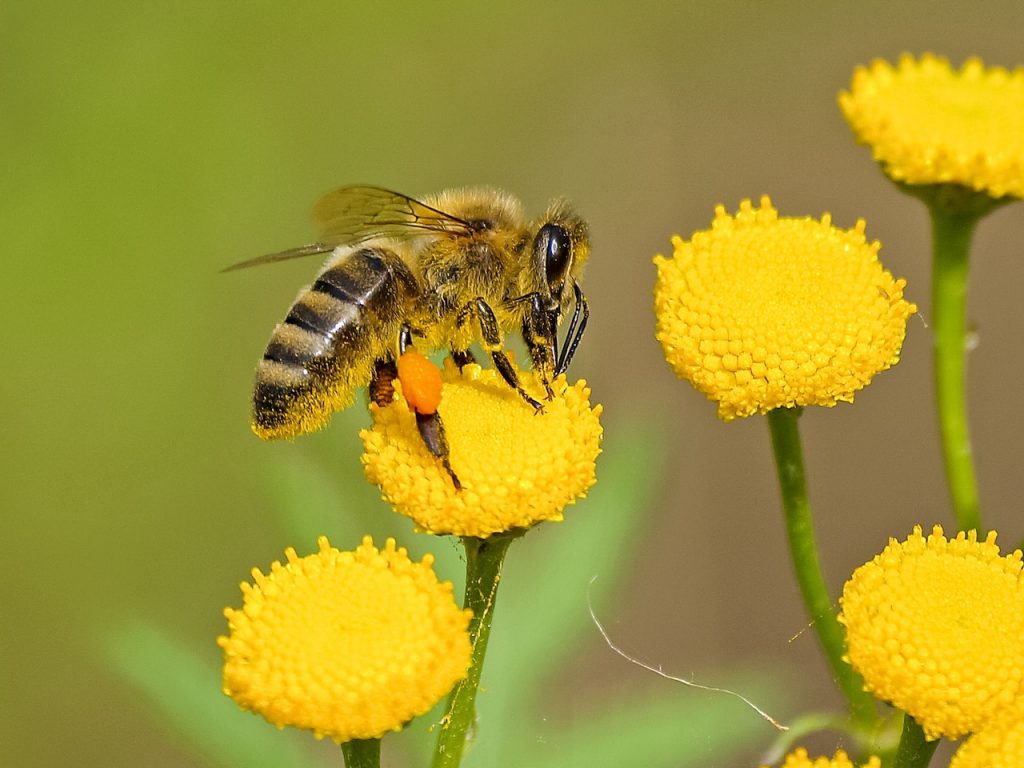Could a New Honey Bee Vaccine Protect Our Vital Pollinators?
Bees – The Voice of Our Fields
You may have noticed that the topic of bees is one that’s frequently covered in our blog articles, and if you’re even remotely involved in the world of agriculture, you probably understand why — bees are a vital tool for the continued success of commercial agriculture. In recent years, research around these buzzing pollinators has grown exponentially to answer questions on the declining strength of honey bee colonies. Although the number of US colonies has stayed above 2.3 million since 1980, beekeepers are facing challenges to maintain the health of colonies. California farmers utilize roughly 1.8 million colonies to pollinate the state’s one million acres of almond crops, according to the American Beekeeping Federation, and this demand continues to grow. While colony collapse, insecticides, fungicides, drought, less forage due to urban sprawl, and climate change were initially thought to be causal agents to the decline, researchers have the opportunity to dig deeper to define the main factors affecting honey bee health and what can be done to improve it. Due to varroa mite infestation of the colonies, overwintering difficulties, transportation stress, and nutritional gaps as well as various infectious bacteria, fungi, viruses, and protozoa that can wipe out entire bee colonies, these busy pollinators have more to worry about than locating the next blooming plant. We’ve discussed the value of pollinators in previous articles and even questioned if the pollinator crisis is being blown out of proportion — spoiler alert: it isn’t.
Although humans are directly responsible for pesticide use and urban sprawl, there is less of a direct correlation between us and the spread of infectious disease and harmful bacteria amongst bees. Fortunately, entomologists and conservationists are beginning to sound the alarm around the challenges of maintaining colonies of European honey bees, triggering advances in insect vaccine research targeted to prevent one of the bacterial diseases harming honey bees — American Foulbrood Disease. We’ve decided to do some digging and ask, “could a new honey bee vaccine protect our vital pollinators?”
The First Approved Bee Vaccine
Georgia-based biotech company, Dalan Animal Health, has made a reality out of what was once believed to be impossible — a bee vaccine. This vaccine, which garnered conditional approval by the US Department of Agriculture, provides much needed protection against the bacterial disease, American Foulbrood (AFB). This bacterial disease isn’t new on the scene as records indicate it has been destroying entire honey bee colonies for at least the past couple hundred years.
AFB typically begins its invasion into colonies when honey bee larvae consume the microscopic spores in their food, according to Victoria State Agricultural Department, and can quickly kill bees by the 10’s of thousands in a colony. This disease is problematic not only for bees, but for commercial agricultural operations that rely on them to pollinate fruit and nut bearing crops. AFB infections within honey bee colonies typically have the most significant impact on larvae, often discoloring hive combs and creating sunken cappings, according to BeeAware.org. Additionally, infected hives may give off sulfur-like odor which is typically an indicator of an advanced AFB infection. Ultimately and unfortunately, there is no cure for infected hives and they must be destroyed, along with any tools that have been used with the hive in order to prevent the spread of additional AFB spores as they can lie dormant for more than 70 years, according to the Penn State College of Agricultural Sciences.
That’s why Dalan Animal Health’s first of its kind bee vaccine against AFB is such a large step forward for the commercial agriculture industry, apiaries, and of course, honey bees. The vaccine, which is delivered via a sugary jelly that is fed to the queen, triggers an immune response in her offspring. Studies suggest that this vaccine is capable of reducing AFB infections by 30-50%. Although AFB is just one of many diseases impacting honey bee populations, the hope is that this exciting new vaccine will lead to additional vaccines against other diseases — furthering the future of these buzzing allies.
Why are we so Concerned About Bees and Other Pollinators?
If you aren’t aware of the impact that bees and other pollinators have on the food that we eat, we implore you to revisit some of our previous blog discussions to better grasp the significant role that they play in global food production. Consider the following statistics that we’ve previously reported on:
- Roughly 35% of the world’s food crops rely on pollinators – USDA
- Globally, pollinators are responsible for nearly 90% of flowering plants – Source
- Studies suggest that pollinators produce approximately $20 billion of products annually in the US – US Fish & Wildlife Service
- Approximately one out of three bites of food are possible thanks to pollinators – US Fish & Wildlife Service
These facts alone hopefully paint a better picture of the value in protecting bees and other pollinators. It is easy to overlook the need for natural processes when it comes to commercial food production, but this information will ideally provide enough evidence for you to support sustainable best practices when it comes to protecting our pollinators and ensuring their longevity for generations to come. To echo the bold and succinct sentiment of the US Department of Agriculture, they stated, “Without pollinators, we don’t eat — it’s as simple as that.” Let’s continue supporting researchers, reducing human impact on pollinator decline, and ensure a future with honey in the hives and food on our tables.
References:
- https://www.dalan.com/bees-in-peril
- https://agriculture.vic.gov.au/biosecurity/animal-diseases/honey-bee-pests-and-diseases/diagnosis-control-and-eradication-of-american-foulbrood-disease#:~:text=AFB%20is%20caused%20by%20the,AFB%20spores%20with%20their%20food.
- https://www.frontiersin.org/articles/10.3389/fvets.2022.946237/full
- https://beeaware.org.au/archive-pest/american-foulbrood/#ad-image-0
- https://extension.psu.edu/honey-bee-diseases-american-foulbrood
- https://www.nrcs.usda.gov/conservation-basics/natural-resource-concerns/animals/insects-pollinators
- https://www.growingagreenerworld.com/the-importance-of-pollinators/#:~:text=Pollinators%20are%20vital%20to%20creating,of%20the%20world%E2%80%99s%20flowering%20plants.
- https://www.fws.gov/
- https://www.usda.gov/media/blog/2016/06/24/reversing-pollinator-decline-key-feeding-future#:~:text=Estimates%20showed%20that%20wild%20bees,and%20soybeans%2C%20in%20the%20Midwest.
- https://www.abfnet.org/page/PollinatorFacts
